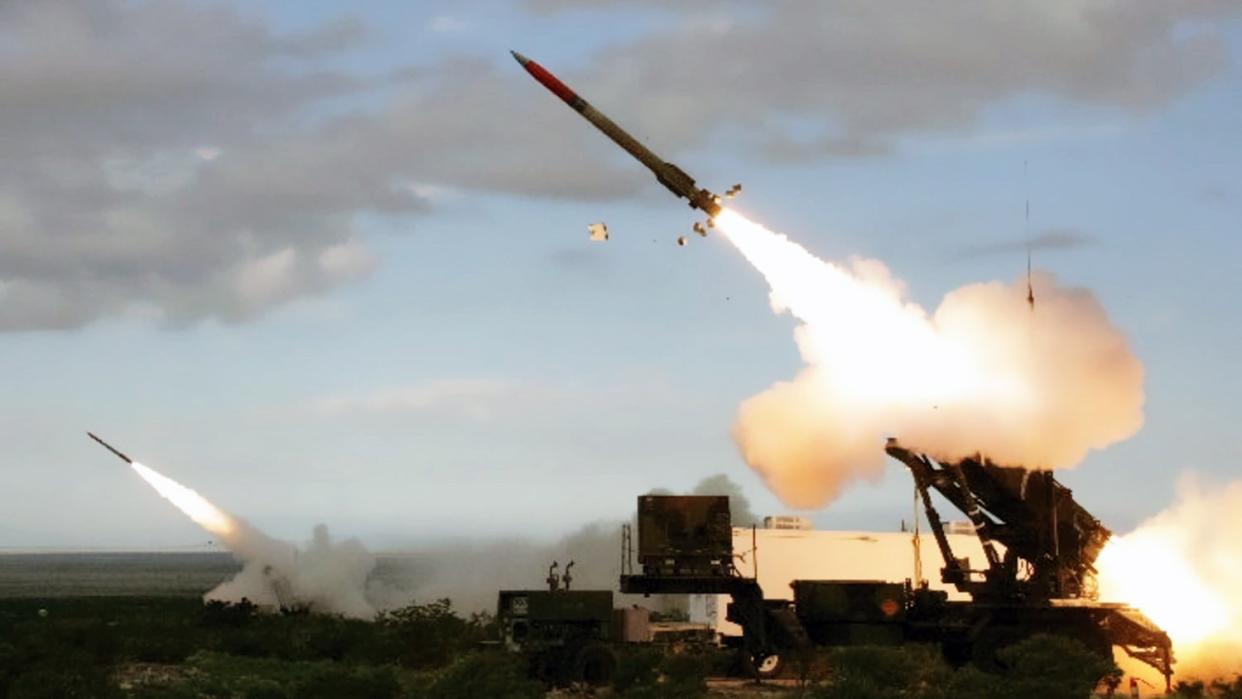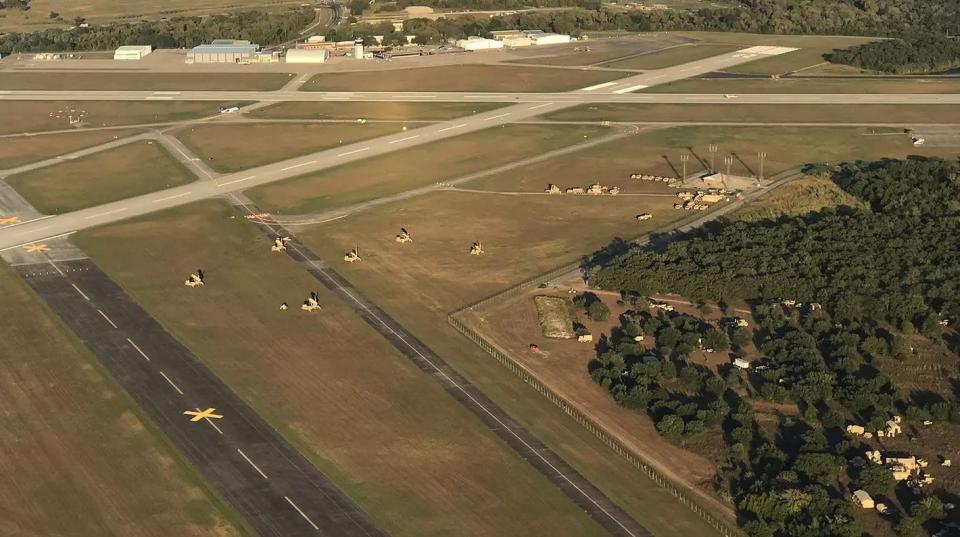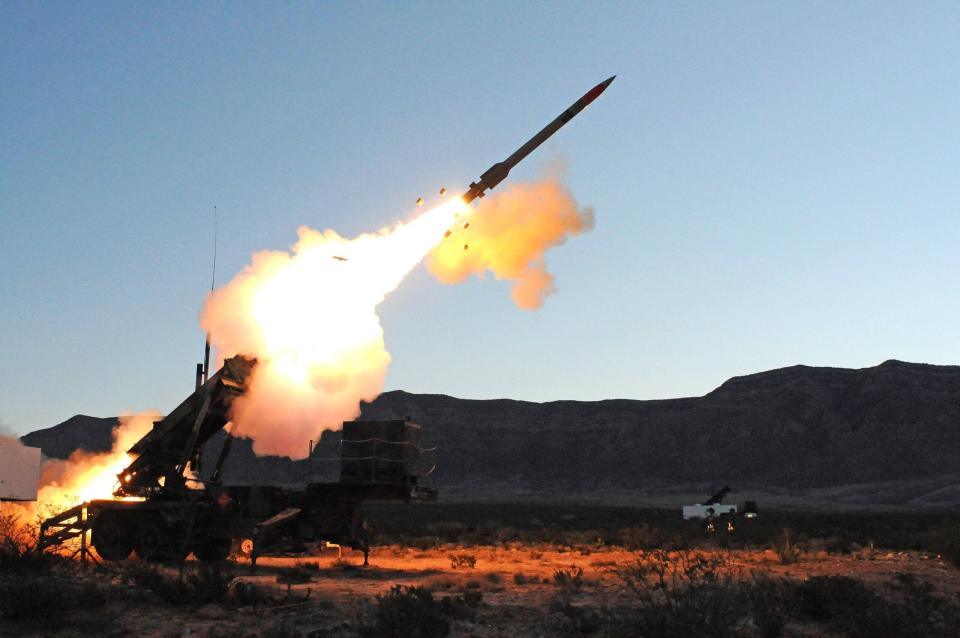Ukraine To Receive Five More Patriot Systems By End Of 2024

Raytheon, the main contractor of the Patriot air defense system, has announced it plans to deliver five more of them to Ukraine by the end of next year. So far, Ukraine has received two Patriot batteries, one from the U.S. and one from Germany (consisting of German and Dutch components), to bolster its air defenses. The Netherlands agreed in January to also supply a pair of Patriot launcher components.
The announcement from Raytheon represents a drastic expansion of air defense capability for the embattled nation. Five additional Patriot systems would provide at least some form of defensive coverage against various types of aerial threats over most of the country, especially around key population centers. It would also provide valuable redundancy.
That Raytheon intends to increase its supply of additional Patriots to Ukraine was first revealed by the company’s Chief Executive Greg Hayes to the Wall Street Journal. Hayes also indicated to the paper the overall production rate of Patriot will ramp up to 12 systems annually. According to the company, it has built and delivered more than 240 of the systems to date. Patriots are not cheap, with a single complete system costing around $400 million. That's not including interceptors, which can push the total price tag to over $1 billion. Moreover, new customers have to wait more than two years for the system to be built by Raytheon, according to the WSJ.
https://www.youtube.com/watch?v=FG5EysBBwoE
“We have been very surprised at its effectiveness,” Hayes said of the Patriot's performance in Ukraine to the WSJ. Along with other air-defense systems, the Patriot has intercepted as many as 90% of incoming threats in Ukraine, Haynes told the paper. He also noted that Ukraine has adapted the system’s software to enable it to track and destroy missiles with hypersonic performance, flying twice as fast as it was designed for.
The WSJ further indicates that Raytheon and Lockheed Martin – manufacturer of PAC-3 interceptors used with the latest Patriot variants – are expanding their plants as part of a broader effort by the Pentagon to replenish U.S. munitions stockpiles in light of donations to Ukraine and to meet fresh demand. According to Brenda Davidson, vice president of the PAC-3 program, Lockheed Martin is turning to users and customers of the Patriot such as Poland to produce more parts in light of this growing demand, the paper reveals.
https://www.youtube.com/watch?v=xU9C2iLm764
That the Patriot would add a valuable anti-ballistic missile capability in conjunction with PAC-3 interceptors to Ukraine’s arsenal was noted by The War Zone long before the first system was delivered to the country earlier this year. Since then, the system has been used for shootdowns of Russian Iskander short-range ballistic missiles and examples of the Kinzhal air-launched derivative. Although with only two batteries supplied so far, the defense provided by donated Patriots remains localized to the Kyiv region.
On May 16, for example, one of Ukraine’s Patriot batteries defending Kyiv detected more than a dozen incoming Russian missiles including six Kinzhals, at a distance of about 125 miles, the WSJ notes. The system destroyed all of them, the last at a distance of about 9 miles.
“No one was 100% sure that the Patriot was capable of destroying a [Kinzhal] hypersonic missile,” said Col. Serhiy Yaremenko, commander of the 96th Anti-Aircraft Missile Brigade, which defends Kyiv. “Ukrainians proved it,” the paper reports.
It should also be noted that Ukraine's Patriots have also been providing important additional long-range air defense capacity against air-breathing threats, such as cruise missiles and drones.
Patriot batteries have remained high on the wish list for Ukraine’s President Volodymyr Zelenskyy, who recently called for a Patriot coalition until Western fighter jets can be delivered to the country.
https://twitter.com/KyivIndependent/status/1664177574417776642?s=20
Zelenskyy has continued to push for more Patriot batteries, stating recently:
“When Patriots in the hands of Ukrainians ensure a 100% interception rate of any Russian missile, terror will be defeated,” he noted in a nightly address at the end of May. As part of its latest arms package for Ukraine, the Biden administration confirmed that “additional munitions for Patriot air defenses” would be supplied to Ukraine.
At the same time, Ukraine's Patriot systems have become high-value targets for Russia, something we have long made clear would happen. This is due to their extreme operational value, high cost, and because of what they symbolize in terms of U.S. and allied support for Ukraine.
They are also relatively easy to target, although destroying them is another matter. Under normal circumstances, their radars emit a massive electromagnetic signature that can be easily detected and geolocated, and, owing to their distributed components, detecting a battery via other surveillance means usually isn't a huge challenge. The semi-static nature of the system also means it isn't that mobile. Russia has repeatedly targeted Patriot systems in Ukraine, including attacking them with Kinzhal air-launched ballistic missiles, cruise missiles, and drones.

Patriot, which is actually a forced acronym standing for Phased Array Tracking Radar for Intercept, is America's primary long-range surface-to-air missile system. A typical Patriot battery consists of an AN/MPQ-65 multi-function phased array radar, and requisite fire control, communications, and other support components, as well as up to eight trailer-mounted launchers. The latest variant of the Patriot system can be used to launch the entire family of Patriot missiles, including PAC-3 interceptors.

Development of the Patriot began in the early 1960s, and the system was first used in combat during the 1991 Gulf War. Since then, the system has become highly sought after – particularly for defense against shorter-ranged ballistic missiles. Improvements over the past four decades have seen the systems’ customer base blossom to 18 countries, including Qatar, Kuwait, and most recently, Switzerland. Patriot batteries have been extremely active in recent years in the Saudi-Yemen conflict, with many of the multi-million dollar interceptors being spent on incoming drones, as well as cruise and ballistic missiles.
One misconception is that the U.S. and its allies have many of these systems laying around. They really do not. They are prized capabilities that often have to get rationed based on the threats emanating from different hot spots. You can read more about this reality here. The degradation in the geopolitical status quo around the globe has only made these systems and their high-tech interceptors in much higher demand, hence Raytheon moving to up production in an attempt to meet it.
Clearly, the news of more Patriot systems heading to Ukraine can only be good news for those coordinating Ukraine’s military response to Russia's all-out invasion of the country. Yet the gap between now and the end of 2024 is a large one for Ukraine. We'll have to see if the U.S. and its allies attempt to temporarily plug it with additional systems.
Contact the author: oliver@thewarzone.com

